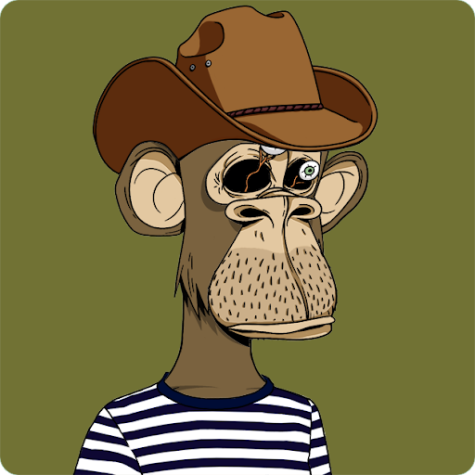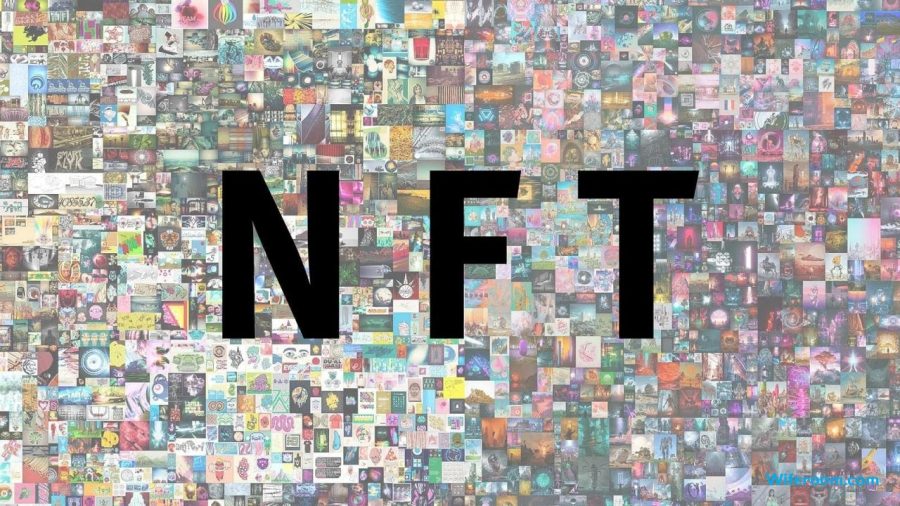What are NFTs?
September 27, 2022
NFTs. They took the internet by storm about a year or so ago. Images, tweets, and short videos were being sold for millions and millions of dollars. Celebrities, NBA stars, Youtubers; everyone was getting in on the craze. Massive corporations like Nike, Coca-Cola, McDonalds, and many more released their own NFT lines. Since then, the NFT hype has calmed down, but the vast majority of people still have no idea what NFTs are or how they work. So, today I’m going to try to explain NFT’s to you in a manner as simple as possible.
NFT stands for “Non-Fungible Token”. The “Non-Fungible” part is just a fancy way of saying that NFT’s are one-of-a-kind. Most traditional forms of currency are fungible, meaning they have set values and can be equally exchanged. For example, my $20 bill is worth the same as anybody else’s $20 bill. If I asked you to swap our $20 bills it would mean nothing. On the other hand, NFTs are completely unique and do not have any equivalents. For example, there only exists one original, valuable version of this Bored Ape Yacht Club NFT shown below.

Now, the fact that I just inserted that image here raises the most important question surrounding NFTs. If I can take this image and use it however I’d like, what’s the point? Well, the answer is somewhat related to how collecting works in real life. Imagine that I owned the original copy of Van Gogh’s Starry Night. Yes, other people could make prints and copies of this painting, but I would be the only person that owns the original artwork. NFTs are essentially this same idea for digital artwork. Anyone could hit “copy image” or “save as” and use your asset, but you are its true owner.
One of the most attractive features about NFTs is that they erase any questions about the authenticity of one’s collection. NFTs are backed by the Ethereum blockchain. This blockchain is a public service that keeps record of digital transactions. It is most commonly used to track the trading of Ethereum, a popular crypto currency, but it is also used to track NFT transactions. Collectors IRL often run into the issue of deciding whether items are truly what the buyer says they are. Yeah, someone can claim that they have a mint-condition, first-edition Charizard Pokemon Card, but it’s difficult to know whether they are telling the truth. Having a blockchain allows collectors to trace the transactions of their desired items and to have concrete proof that their collections are the real deal.
So, what’s the point of these NFTs? Well for now they are pretty much an absurdly extravagant flex. However, while the idea of purchasing a picture of a monkey for one million dollars may sound crazy, if you think about it on a smaller scale it’s not too unreasonable. Why do people collect art, comics, trading cards, or any other odd commodities? Why do people spend money on cosmetic skins in video games? The answer is the same: To own something you’re interested in and show it off to other people.
However, calling NFTs a glorified way to digitally collect art would be selling their potential short. The blockchain basis behind NFTs could have major practical implications in the future. A digital NFT can be made to represent any physical belonging. Let’s say for example that you wanted to purchase some form of real estate. Instead of having to go through a lengthy process of purchasing the titles and documents attached to that property, you could instead buy NFTs of these documents. This would speed up the transaction process tremendously and leave an official record of your purchase in the blockchain. Another commonly used example involves passports. As crazy as this sounds, imagine that instead of showing airport security your passport, you showed them an NFT of your passport. Since this NFT is one-of-a-kind, it would instantly confirm that you are the owner of that passport and confirm your identity to the security. Completely warping our society’s functioning to revolve around NFTs would certainly take time, but it is a distinct possibility for the future.


